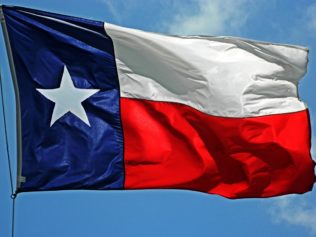Apparently a great way for your city to make Livability.com’s list of the 100 Best Places to Live in the U.S. is to be conspicuously devoid of one particular entity: Black people.
The site’s second annual list was released to much fanfare in the last few days, with many publications picking up the compelling ranking of the small and mid-sized towns and cities across the country that score high on that much-desirable characteristic of “livability.” Using a methodology that assigns locales a score on such measures as economy, health, housing, infrastructure and, yes, diversity, the website was able to give each place an overall score that allowed it to create a Top 100 list.
Among the top 10 best places to live in the U.S., the overall percentage of African-Americans in their population was 4.43 percent, according to U.S. Census numbers. The highest at 10 percent Black was Berkeley, California, which ranked as the sixth best place to live. Lowest among the top 10 at 0.5 percent Black was Missoula, Montana. Second lowest at 0.9 percent Black was Boulder, Colorado.
Madison, Wisconsin, which came in as the best place to live in the country, has a Black population of 7 percent — well below the U.S. number of 13.2 percent.
So how did a ranking system that actually included diversity as a criterion spit out locales that were so incredibly devoid of Black people? A few of the top cities, such as Berkeley, had high numbers of Asians, which gave it a fairly high diversity score. But because there were so many different scores used in the methodology, it was possible for a city or town to have a very low diversity score but a high overall score because it scored high on other criteria, such as health and economy.
“The fundamental makeup of the community impacts how we interact with it. Is the population generally older or younger? Is it diverse in terms of race and ethnicity? Is it diverse in terms of income and education?” the editors of Livability.com write in their discussion of diversity. “Overall, there is increasing diversity throughout the U.S., however, it’s also increasingly likely that you’ll live next to someone like yourself. According to Charles Murray’s recent book, Coming Apart: The State of White America, 1960-2010, cities and their suburbs are becoming increasingly isolated along economic, educational and cultural lines.”
“So in keeping with our principle that we wanted cities that are livable for everyone, we worked with our partners at the Martin Prosperity Institute to analyze Census data and create two custom data points,” the editors write. “One variable measured racial and ethnic diversity, while the other measured age diversity. We also looked at population growth. Is this community thriving or shrinking? The average score across all the cities we measured was 50. The cities that scored well in this area show that they are growing, livable cities – for everyone.”
Among the top 10, all of the cities except three scored above average on diversity — even though they had virtually no Black people — by doing well on the other aspects of diversity the site mentions.
But the cities in the top 10 clearly do not work for everyone. Just like every other group in the population, most African-Americans would prefer to live in cities where there are people who look like them. That is not going to happen in the cities celebrated by Livability.com.


